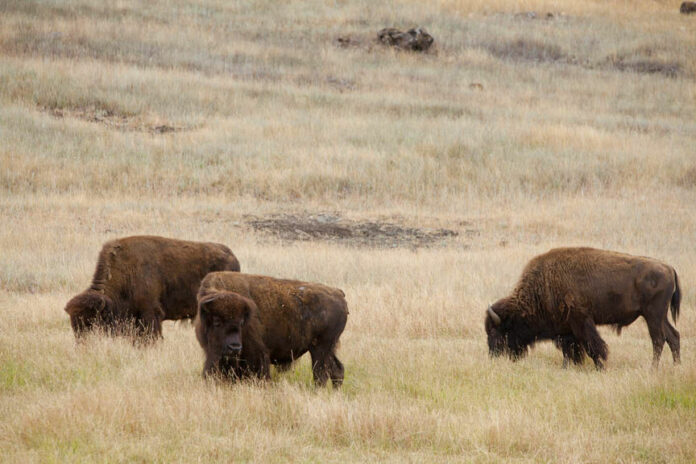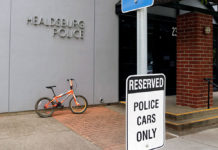Most good stories have an element of mystery to them, and this one is no different. Sonoma County is rife with farms and livestock of all kinds — emus, alpacas, goats and cows of every shape and size — but the sight of a massive buffalo, more properly called an American Bison, peacefully grazing in a field between award winning vineyards is surely a surprise.
Many years ago, when litigator-turned-vintner Fred Furth had a small herd of Texas Longhorn steers grazing in field adjacent to Chalk Hill Road, across from it’s titular winery. The huge bovines, crowned with horns almost seven feet from tip to tip were eye-catching to be sure. And that, according to Executive Vice-President and Director of Vineyard Operations Mark Lingenfelder for Chalk Hill Winery, is where our story begins.
“As the legend goes, many, many years ago, a veterinarian who lived somewhere around here was driving by and saw those steers,” he said. “And he went to Fred (Furth) and said “Hey, you’ve got those steers, you should have some buffalo to go along with them.’”
This veterinarian, whose name has been lost in memory, happened to have a pair of the creatures he was looking to get rid of. “The guy didn’t have a big space for them,” Lingenfelder said. “So he was having to feed them a ton and he was tired of it. And that was how Fred had gotten the steers, too, someone had given them to him, so he said, ‘Yeah, I’ll take them.’”
The male and female bison were installed in the roadside pasture and became an immediate hit. And an immediate hazard.
“We had a lot of problems when they were down in front,” Lingenfelder said. “People were excited to see them, but they’d be double parked on Chalk Hill Road, or try to feed them, or climb over fence to take their picture and it’s not safe — because they’re not safe.”
The female bison was pregnant, and soon the little herd began to grow, but while they have become a beloved part of the story of Chalk Hill they should never be mistaken for pets. Bison are the largest land mammal in North America and they are not tame or safe to be around. They have a reputation for being difficult to train and it’s not unusual for unwary visitors in places like Yellowstone to be chased, butted, or gored.
To prevent such a fate from befalling locals, the herd was moved to a far pasture on the property that is now Roth Winery. Wine tasters and lunch patrons may occasionally spy them on the hills overlooking the tasting rooms and patio, but for the most part they live a life untroubled by human intervention.
“Where they are now is not a place anyone will ever see them and it’s safer. It was kind of cool but it was an attraction that had an element of trouble or danger,” Lingenfelder said. “They are hard to work with — they’re not domesticated like cows. It’s not safe to go in there with them or anything like that.”
Lingenfelder said the herd is around six or seven these days, though he doesn’t know for sure, nor does he know the current ratio of males to females. However, for now there is no plan to relocate or remove them, so they’ll continue to live out their days in the same wine country atmosphere enjoyed by all of us.
“I don’t know if there is a plan, but they’re living out their lives there,” he said. “At one point (during the sale of Chalk Hill and Roth to Foley Wines in 2010) there was a guy with a buffalo ranch in Mendocino and he offered to take them off of Furth’s hands but he never could corral them. He managed to load two of them and then left in frustration. So they’re just out there.“
52.9
F
Healdsburg
May 24, 2025










